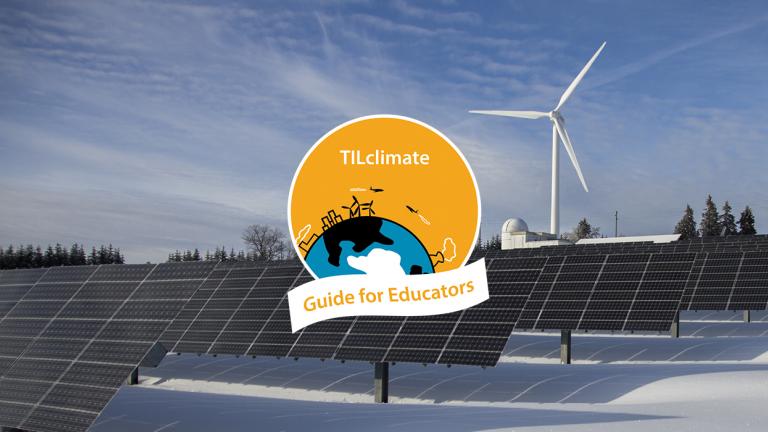
This Guide for Educators was developed by the MIT Environmental Solutions Initiative as an extension of our TILclimate (Today I Learned: Climate) podcast, to make it easier for you to teach climate change, earth science, and energy topics in the classroom. It is an extension of the TILclimate episode "TIL about wind and solar power."
Browse all TILclimate guides for educators.
Description
Wind and solar power are key tools in the climate change toolkit—but what are their strengths and weaknesses? Can they provide us with all the clean electricity we need? Students investigate wind and solar resources and electricity needs. Then, they research the growing field of energy storage and share their results with a key audience.
SWBAT:
-
Explain why wind and solar power are important parts of a low-carbon future.
-
Explain why energy storage is needed to harness the potential of wind and solar.
Skills:
- Map reading and spacial analysis
- Research methods
Standards:
-
HS-ESS3-1 The availability of natural resources have influenced human activity.
-
HS-ESS3-2 Evaluate competing design solutions for developing, managing, and utilizing energy and mineral resources.
-
HS-ESS3-4 Evaluate or refine a technological solution that reduces impacts of human activities on natural systems.
-
HS-ETS1-3 Evaluate a solution to a complex real-world problem based on prioritized criteria.
-
RST.11-12.2 Determine the central ideas or conclusions of a text.
-
RST.11-12.9 Synthesize information from a range of sources into a coherent understanding of a process, phenomenon, or concept.
Disciplinary core ideas:
-
ESS2.A Earth Materials and Systems
-
ESS3.C Human Impacts on Earth Systems
-
ETS1.B Developing Possible Solutions
What is included in this Educator Guide
- How to use TILclimate Educator Guides (Download)
- Full Educator Guide (Download)
- Includes both Teacher and Student pages
- Includes both Teacher and Student pages
- Teacher pages (Download)
- Includes materials, discussion questions, background resources, and adaptation suggestions for science, social science, and ELA teachers
- Includes materials, discussion questions, background resources, and adaptation suggestions for science, social science, and ELA teachers
- Student pages (Download)
-
Reading: Where Does Electricity Come From?
-
Investigation: When the Wind Blows and the Sun Shines
-
Research Project: Energy Storage - More Research Needed
-
Listen to the episode


